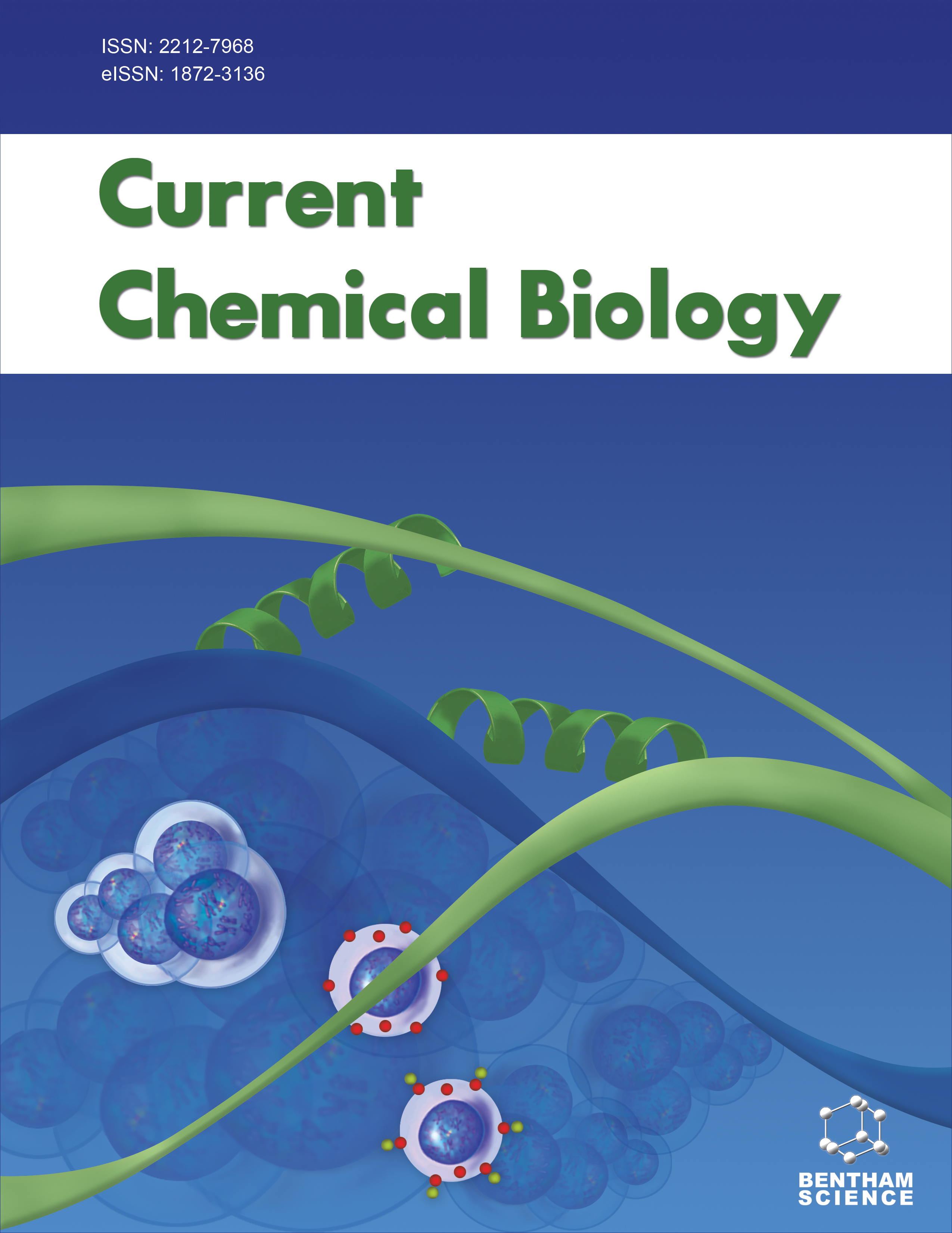- Home
- A-Z Publications
- Current Chemical Biology
- Previous Issues
- Volume 12, Issue 1, 2018
Current Chemical Biology - Volume 12, Issue 1, 2018
Volume 12, Issue 1, 2018
-
-
Protein Flexibility: A Challenging Issue of Drug Discovery
More LessBackground: Now-a-days, drug design is an important area of research in medicinal chemistry and theoretical aspects of it basically involve molecular docking. Therefore, a detailed knowledge of drug targets, de facto of proteins/enzymes, is essential and thus it has created interest in the study of protein structure and its flexible nature. Objective: The article aims to describe in detail the flexible nature of proteins and it Read More
-
-
-
The Two Faces of Protein Flexibility: A Topological Approach
More LessAuthors: Luisa Di Paola and Alessandro GiulianiBackground: Protein-protein interactions embody the main target of drug discovery due to their vast presence in physiological mechanisms. Hence, targeting protein-protein interfaces is actually the “holy grail” of pharmacology. Much is known about the binding of small molecules to single peptide chains, but much more is still to be discovered about macromolecular complexes and how binding can be affected by modulator Read More
-
-
-
Flexibility of Important HIV-1 Targets and in silico Design of anti-HIV Drugs
More LessBackground: The functions of all proteins in the biological world are attributed to their flexibility. The highly dynamical nature of proteins allows the binding of various endogenous ligands and substrates that are essential to carry out normal functions in all organisms. Since proteins play an indispensable role in the chemistry that sustains life, it is imperative to understand their functions and more importantly their dynamic b Read More
-
-
-
Role of Structural Flexibility of HIV-1 Integrase in the Design of Potent Anti-HIV Drugs
More LessAuthors: Vinuth Chikkamath and Anantha N. NagappaBackground: The novel drug discovery of HIV- 1 integrase inhibitors is based on exploring protein flexibility and QSAR studies using the protein structure. In this pursuit, several novel inhibitors are under development. For example, Allosteric inhibitors (ALLINIs) and Multimerization integrase inhibitors (MINIs). Objective: The objective is to discuss the development process of drug discovery and review the latest developments i Read More
-
-
-
Hsp90 Flexibility and Development of its Inhibitors for the Treatment of Cancer
More LessHsp90 is a molecular chaperone which is engaged in the repair of diverse oncogenic proteins. Additionally, it is overexpressed in cancer cells along with co-chaperones, whereas normal cell Hsp90 (less than 2 % of cellular proteins) resides in an uncomplexed state. Hence, this chaperone is an encouraging target for the discovery of novel chemical entities against cancer. Proteins execute their functions by interacting with vario Read More
-
-
-
Structural Flexibility in HCV NS5B Polymerase and Molecular Modelling of Anti-HCV Drugs
More LessAuthors: Vaishali M. Patil and Satya P. GuptaBackground: NS5B polymerase remains an important anti-hepatitis C virus (HCV) drug target. It has been well reported that ligand binding induces large conformational changes in the receptor. Several computational models describing polymerase dynamics have been reported. Various conformational forms have been determined by crystallography and NMR experiments and they suggest the binding of HCV inhibitors in Read More
-
-
-
Emerging Molecular Targets for Anti-cancer Drug Design
More LessAuthors: Rohit Dutt, Vandana Garg and Anil K. MadanBackground: Interest in targeting metabolism as a viable cancer therapy has been revived in last decade. This has significantly contributed to the understanding of the altered metabolic profile of proliferating cancer cells. Clinically launched target specific drugs have shown encouraging results in terms of both efficacy and safety than conventional anticancer drugs. Objective: Targeted approaches have significantly changed the Read More
-
-
-
The Regulation of Recombinant Protein S Secretion by Extracellular Factors
More LessAuthors: Vijaya S. Pilli and Rinku MajumderBackground: Protein S (PS) is a natural anticoagulant that has a vital function in regulating hemostasis and inflammation. Recently, the physiological and functional aspects of PS have gained considerable attention, whereas the biophysical properties of PS are far less well defined. Objective: In this study, our goal was to improve the yield of recombinant PS with minimal contamination by endogenous, host cell PS. Method: PS-sta Read More
-
Volumes & issues
Most Read This Month
Article
content/journals/ccb
Journal
10
5
false
en


